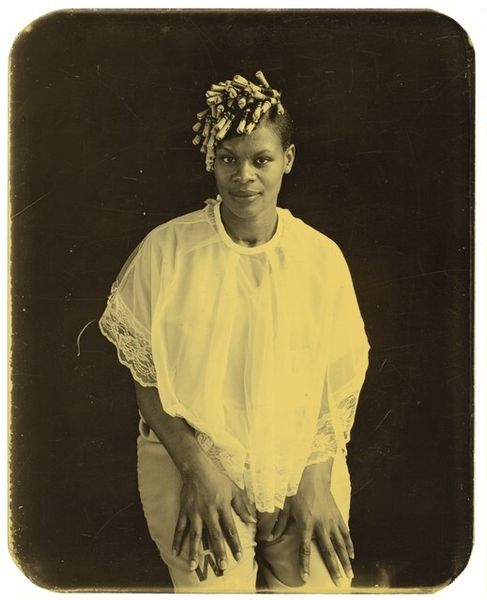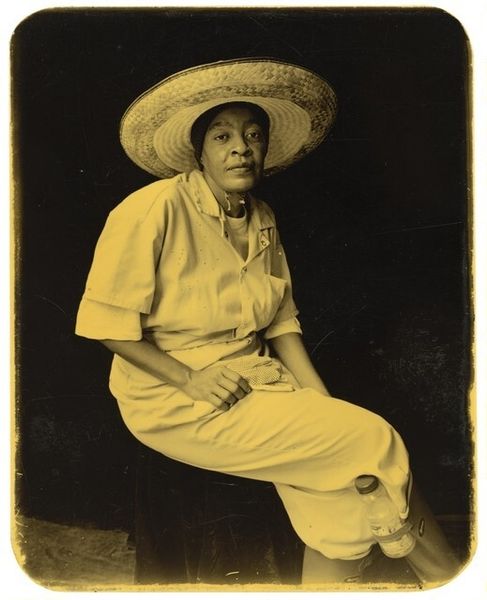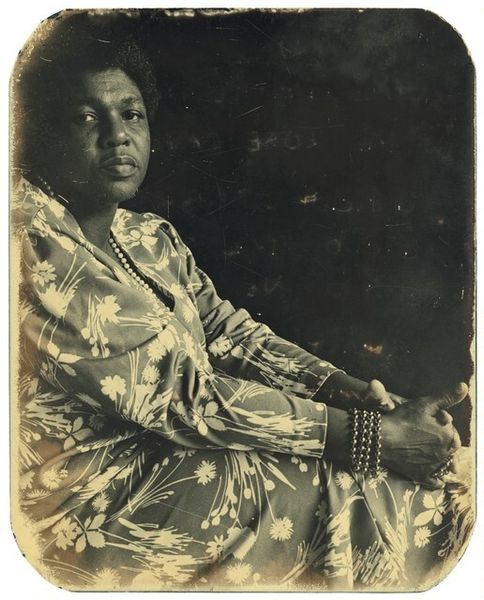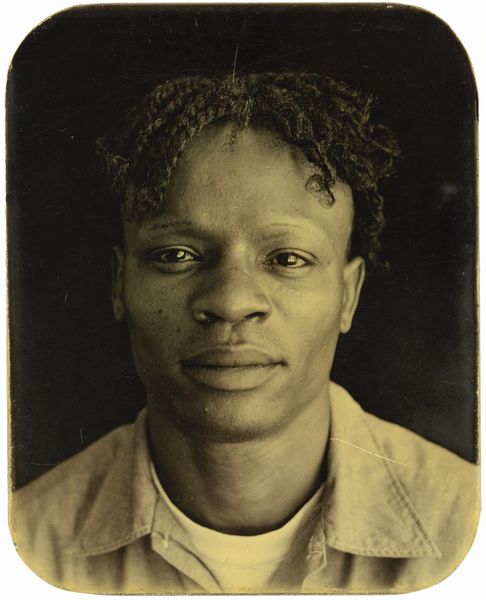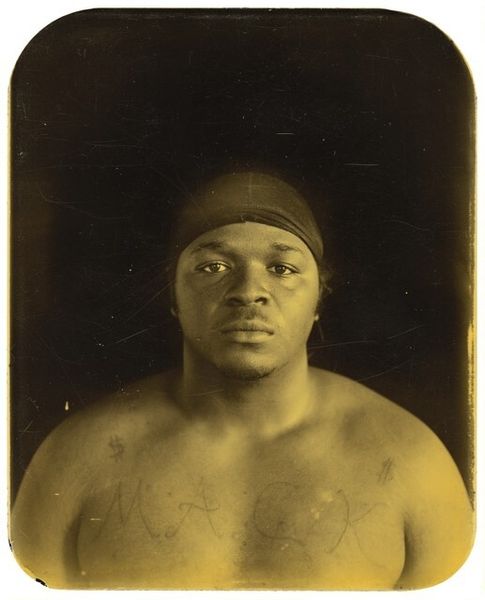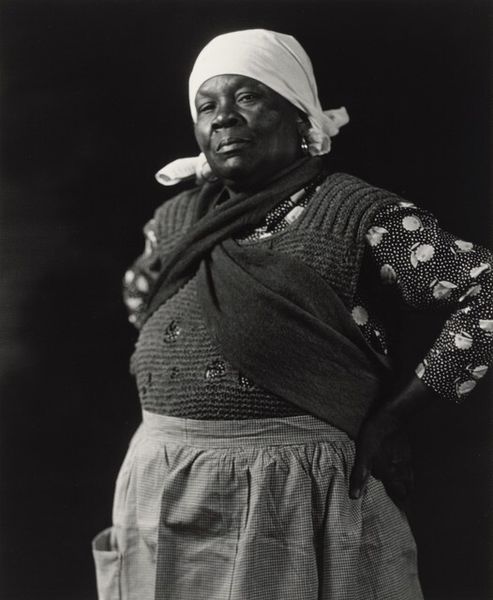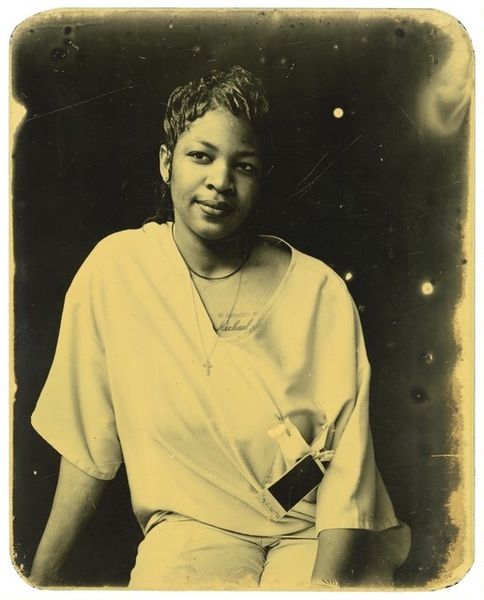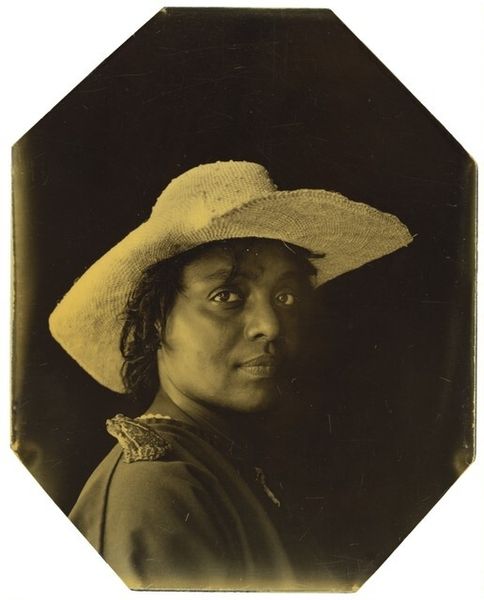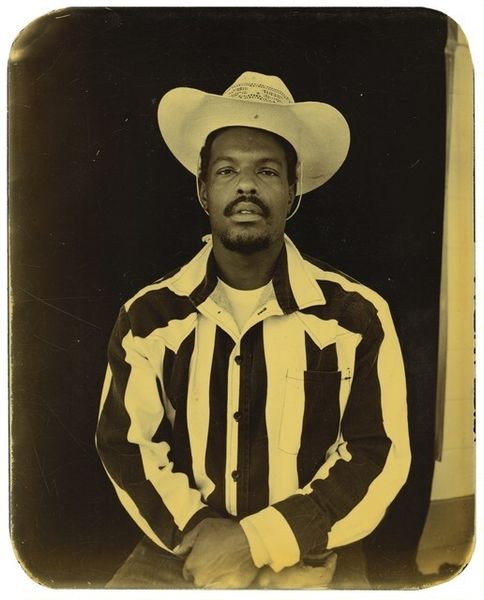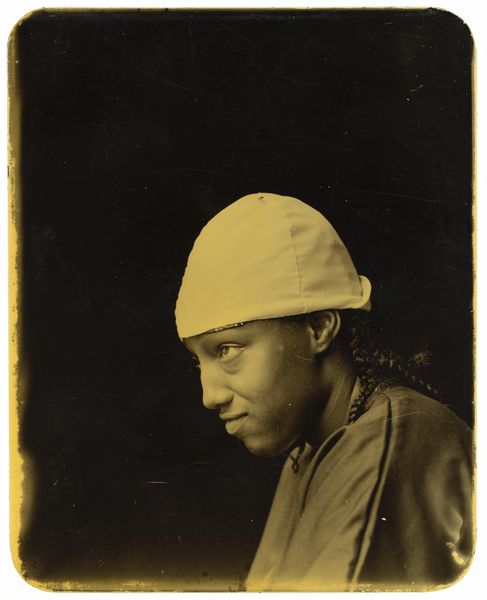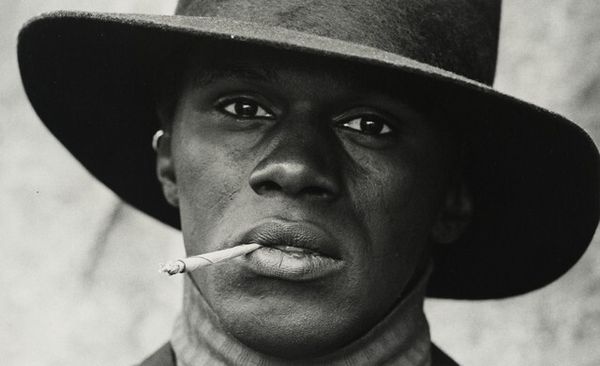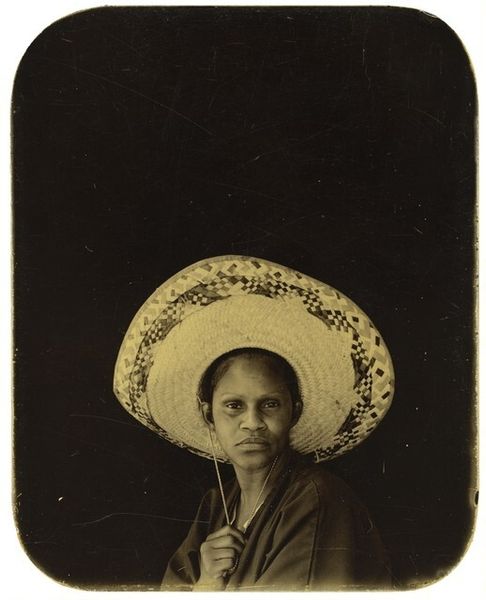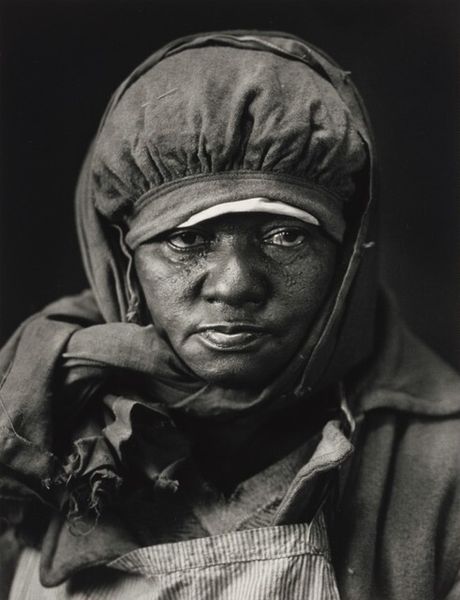
photography, gelatin-silver-print
#
portrait
#
portrait
#
photography
#
gelatin-silver-print
#
portrait photography
Dimensions: image/plate: 12.7 × 10.1 cm (5 × 4 in.)
Copyright: National Gallery of Art: CC0 1.0
Editor: We're looking at "St. Gabriel, Louisiana," a gelatin-silver print photograph by Deborah Luster, from between 2000 and 2015. It's a striking portrait. There’s an undeniable gravity in the subject's gaze. What stands out to you about this piece? Curator: It's interesting to consider Luster's choice of the gelatin-silver process itself. It’s not merely a nostalgic choice; rather, it’s a deliberate commentary on the history of photographic portraiture and its role in representing marginalized communities. We must consider who has historically controlled the means of image production. What does it mean to return to this medium in the context of contemporary art? Editor: I see your point. The choice of an older photographic technique brings with it its own set of implications and questions of representation. Curator: Exactly. Think about the labor involved: the hand-coating of the paper, the darkroom process, each print becoming a unique object. It contrasts sharply with digital photography's mass-producible nature. Luster's approach demands a slower, more deliberate interaction. Do you think this influences how we perceive the subject? Editor: Absolutely. There's a sense of intimacy and care imbued in the process. It feels less about capturing a likeness and more about honoring a human presence. The hat, too, becomes interesting as an artifact of labor, of protection from the sun. Curator: Indeed. The hat’s construction, its material – these speak to a specific cultural context and the daily lives of individuals within that community. By foregrounding these elements, Luster shifts the focus from a purely aesthetic experience to a deeper consideration of the socio-economic realities shaping her subjects’ lives. We can ask ourselves how the labor and materials required in this image interact with the historical conditions of those represented. Editor: That’s given me a lot to consider; looking at the photograph from the viewpoint of its material production, as well as the social factors behind the production. Thanks! Curator: My pleasure. It is in seeing and questioning, that our views can be refined, even challenged, to reveal the image behind the image.
Comments
No comments
Be the first to comment and join the conversation on the ultimate creative platform.

